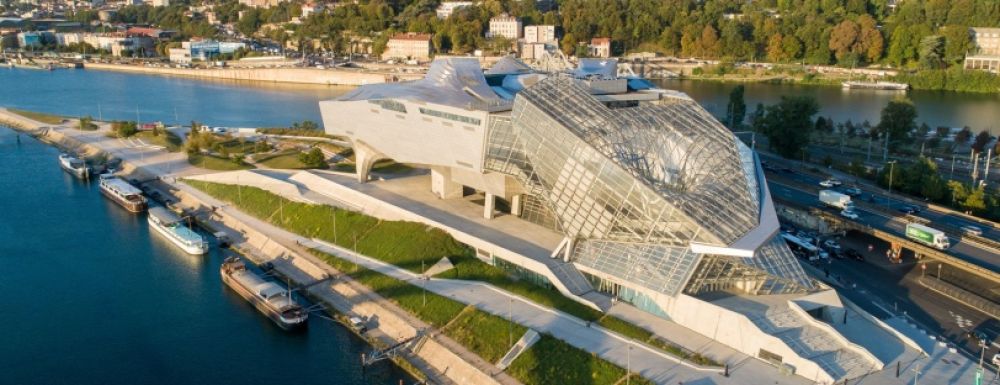

The Musée des Confluences is a contemporary museum located at the confluence of the Rhône and Saône rivers in Lyon, France. It is known for its unique architecture and its comprehensive exhibits spanning the fields of science and humanity. The museum aims to explore the story of mankind and the story of the Earth through a fusion of scientific, social, and cultural aspects.
The Musée des Confluences is a fairly new institution when it comes to the history of Lyon’s tourist attractions. Inaugurated in December 2014, the museum's striking deconstructivist architecture has since become an iconic image for the city. Its creation reflects a modern tendency in tourism, where visitors seek experiences that combine educational enrichment, aesthetic appreciation, and interactive engagement.
The site of the museum was historically a center for trade and transport due to its strategic location at the meeting point of two major rivers. The museum has revitalized this area by becoming a hub for cultural exchange and turning it into a vibrant tourist destination.
The building itself, designed by the Austrian firm Coop Himmelb(l)au, is a marvel that attracts tourists even before they step inside. The construct is often described as a floating cloud of steel and glass resting atop a concreted base, inspiring curiosity and wonder. Its futuristic design sets it apart from the traditional Renaissance and medieval architecture that Lyon is known for, thus bolstering the city’s modern image and appeal.
The Musée des Confluences is recognized for its diverse range of exhibitions. It houses a permanent collection that includes over two million items, divided into several thematic areas addressed in an interdisciplinary manner. It also regularly hosts international exhibitions, making it a continually refreshing destination for tourists interested in science, art, and cultural history.
Interactive displays and digital installations are increasingly vital in the modern museum experience, and the Musée des Confluences makes excellent use of these in both permanent and temporary exhibits. With the world moving towards more personalized and immersive experiences, the museum integrates technology such as augmented reality and interactive screens, allowing visitors to engage with exhibits in novel ways.
Educational workshops and guided tours tailored for various age groups and interests have also become more popular, as the museum caters to diverse audiences, including school groups, families, and international visitors.
Like many tourist attractions worldwide, the Musée des Confluences faced challenges during the COVID-19 pandemic. It implemented various health measures and introduced digital offerings to maintain engagement with its audience. As travel resumes, the museum is experiencing a resurgence of visitors, and its flexible exhibitions model allows it to quickly adapt to the latest trends and interests in the tourism market.
For those planning to visit the Musée des Confluences, it offers a unique opportunity to journey through natural history, anthropology, and science in an immersive setting. The museum has become a staple of the cultural landscape in Lyon and continues to grow as a touristic attraction by drawing visitors from all over the globe with its innovative approach to sharing knowledge.
Opening hours: The museum is open to visitors every day except Mondays, with extended hours on select days. It is recommended to check the official website for the most up-to-date information before planning a visit.
Location and accessibility: Musée des Confluences is well-connected by public transportation, with a dedicated tram stop that makes it easily accessible from anywhere in the city. The museum also offers amenities for visitors with disabilities, ensuring that it is an inclusive space for all.
Whether you’re a history enthusiast, science buff, or simply looking for an awe-inspiring architectural experience, the Musée des Confluences provides a captivating journey through time and space, enriching Lyon’s cultural offering and reaffirming its status as a must-visit destination in France.